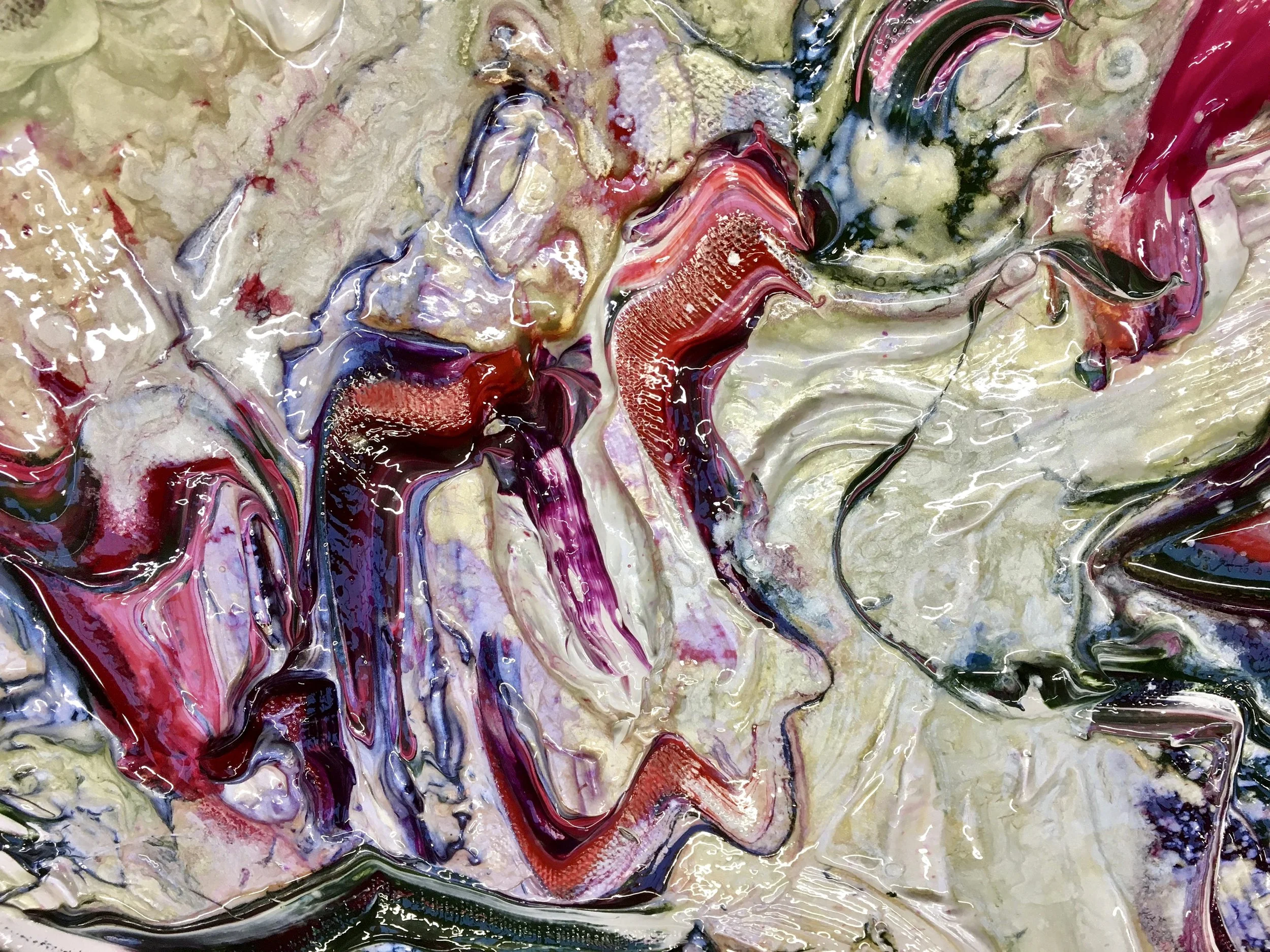Physical Nature of Paint
Excerpt: Interview Transcription
December 2021
Chorus 2021
GU: The surface of a thick oil painting will flatten out the further back from it you step - your eye loses the ability to read the surface of it and illusion takes over. The mind will try to make sense of the space that these elements create. But move yourself very close to the surface of that painting and the illusion of space disappears. You become aware of the body of the paint. The relief of the surface. Your eye follows the undulations of the paint, and you see the impression of the artists hand upon it. I like that. I like to see the evidence of a direct decision being made in the paint. Like a man’s plough decisively marking the earth.
Watercolour is so thin. It has a completely different personality. In comparison to the sizeable quantities of oil paint I use, watercolour is like breath. It’s like breathing an illusion onto paper. Oil paint is viscous and opaque and heavy by nature. It can be thick enough to bank up. I have thoroughly explored and exploited those properties of paint to their limit in the past.
I want an oil painting to be a very physical object by the time I’ve finished working with it. I cannot afford to be tentative in the creation of it - I must prepare very generous volumes of paint with which to work. Only then can I lose myself in the sensory experience of pulling my brush through the body of it with uninterrupted flow and confidence. Given the background from which I came, I recognise myself as a physically driven person. Handling large volumes of paint on large canvases requires a physical effort and participation. That suits my character very well and comes naturally to me.
Scale of a painting is curious. When painting a canvas that is larger than you are, you paint with your whole body as opposed to with the wrist or from the elbow. A 15 by 17cm painting can be carried around with you in your bag. It feels precious, intimate…but the power it has to stir the senses can defy its physical size - the illusory space within it can be immense. And yet my eye can interpret the whole surface in an instant. I can make sense of the illusion from a single viewpoint.
I can paint a tiny image with a great deal of distance in it. My imagination is drawn through the notional window of the picture plane into the illusion of space so effortlessly and pleasingly. But a large painting is quite a different journey. The dynamic is different. The painting dominates you.
A large 210 by 180cm centimetre painting, for example, envelopes you when you stand before it. It can tower over you. It has an imposing power simply because it is a larger object than you. You are facing a giant. It is a sea of paint that stretches wide into your peripheral vision. The eye cannot look at the whole painting at once but only parts of it at a time. Interestingly, it has dimensions you could physically inhabit, like a bed.
A large painting seen from a great distance becomes a small painting. If you place a large canvas in the landscape, it becomes a miniature. If I stand well back from a large painting, the space in it changes - it flattens out. Making a painting that is bigger than you are is more physically challenging. How do you mark one corner of the canvas and reach the opposite side cleanly in one motion? How to you keep a control over the development of the painting as a whole, if you can’t reach one end to the other without walking several steps? Where you position your own body will have an effect on the mark you make - its direction and weight. If you wish to create an illusion of space that suspends disbelief, then you must consider from where and from what angle you approach the canvas. You might keep circling it, for example, painting the canvas from all angles. You might even build a frame over it, that will support your weight, so that you can apply paint from above. Also, a larger canvas might require the use of a much larger brush.
Painting on a large scale allows you to indulge more in the language of paint itself. The image can become irrelevant. When your face is close enough to the painted surface, it’s like reading a map or floating above a landscape like a bird. You might read a confluence of marks meandering their way towards a still pool. Tributaries of colour will converge or diverge. A strong natural light might illuminate puffs of pearlescent pigment. Veils of blue iridescence can glow over an area like an apparition or a will-o-the-wisp. Very thin washes of pigment and turps can set like the bloom on soft fruit. Thick paint can be turned, folded, piled up, layered, spread…to render valleys, and elevations. Colour can accumulate in low-lying areas, basins, canyons. There is folding and faulting in the structure of the paint and some textures can be seen to have been compressed by the weight of overlying material. Excavations from the top surface down to the base stratum can reveal hidden coats laid down long before. Harmony or discord is perceived depending on which colours meet and in what quantities. The eye will recognise pressure applied and retracted, changing velocity of stroke and intrusions of a sharp, whipped mark. Some pigment separates from its carrier oil and seems to crystallise as it ages.
Thickness of paint…there is so much to it. It is a journey.
Geoff Uglow
Studio December 2021
